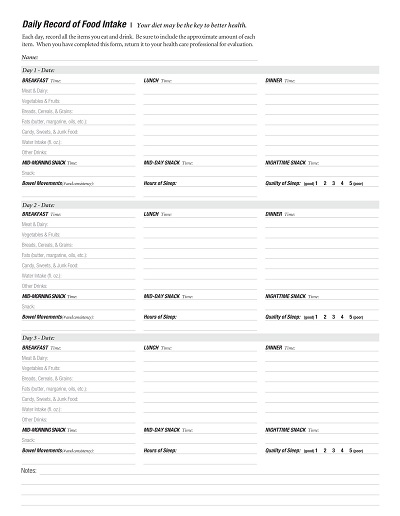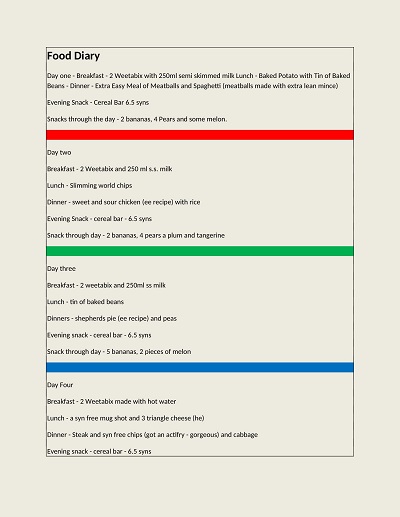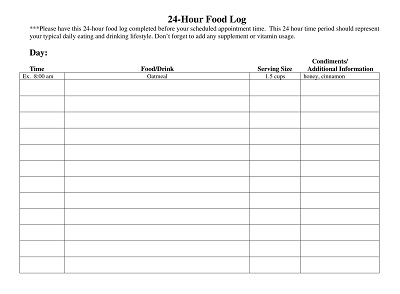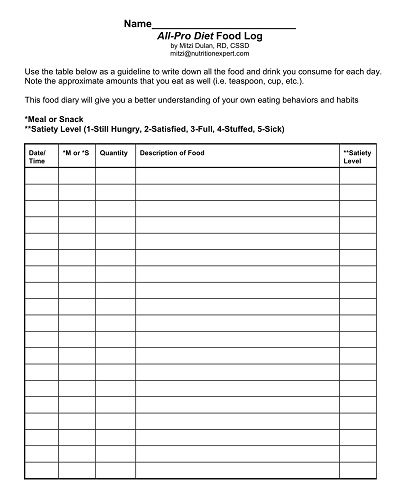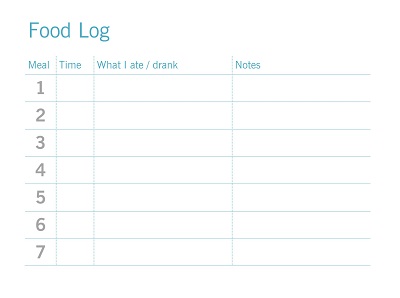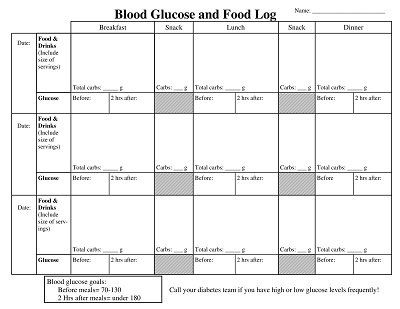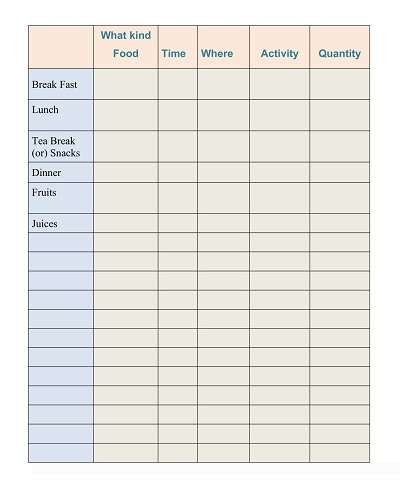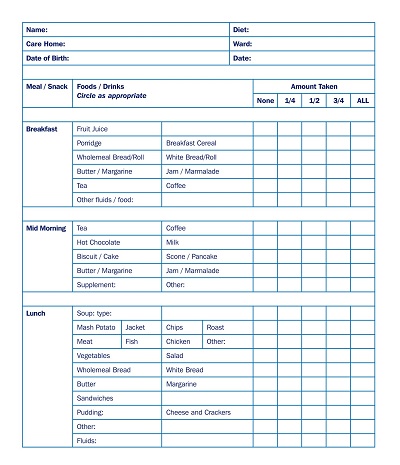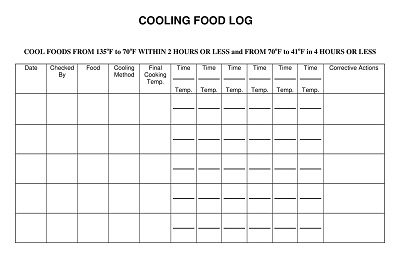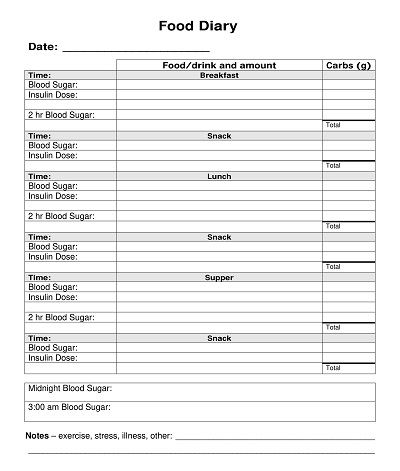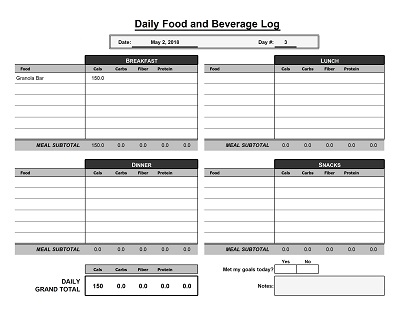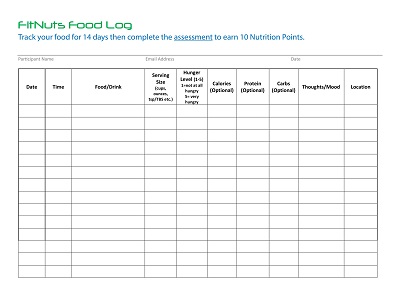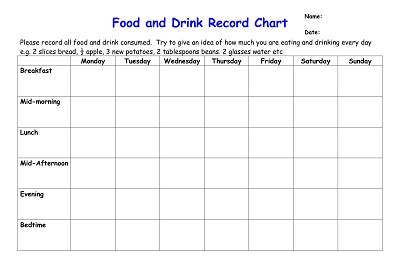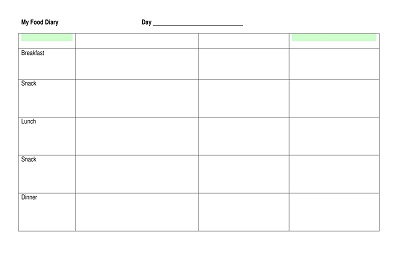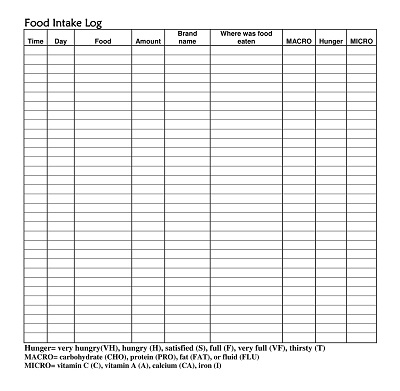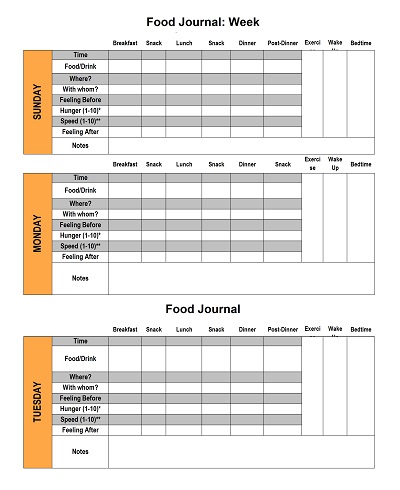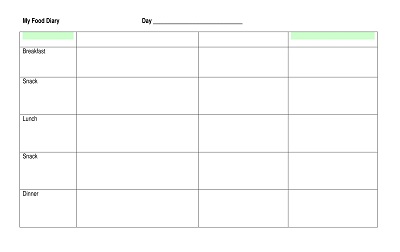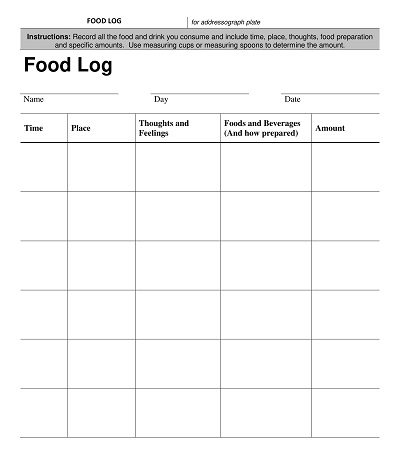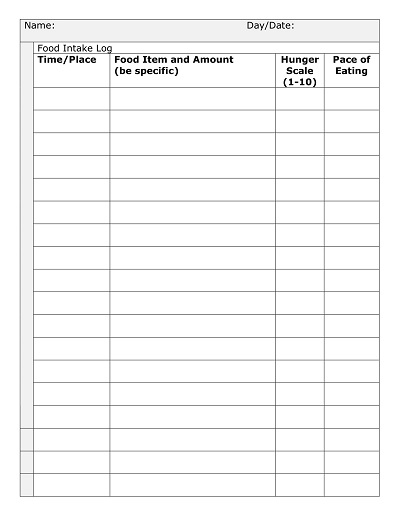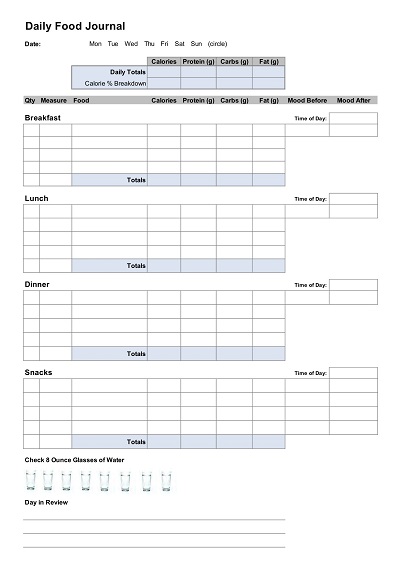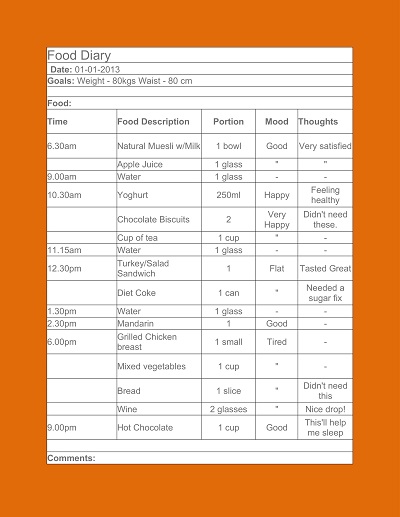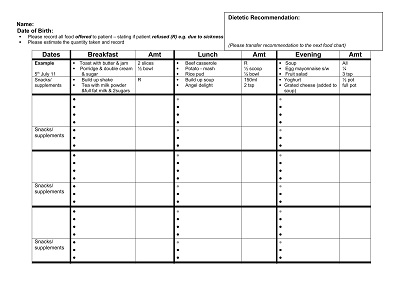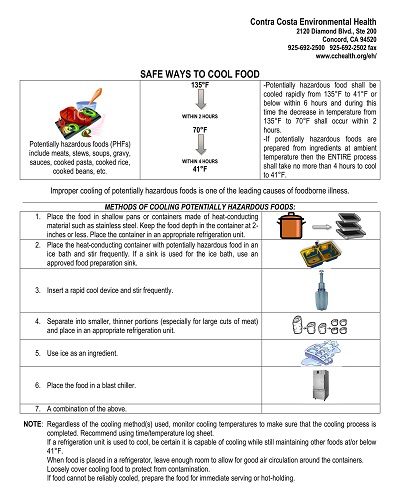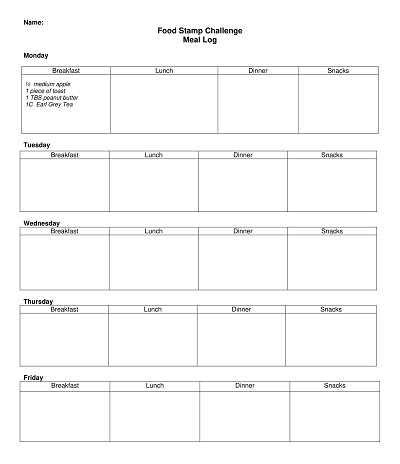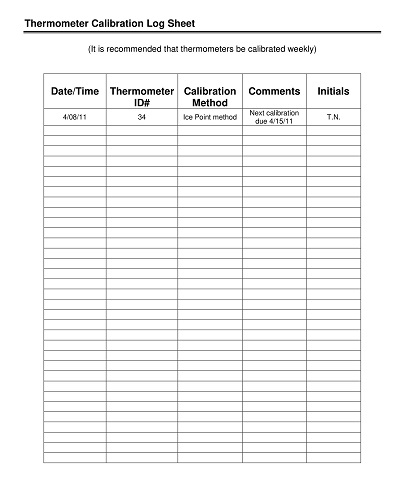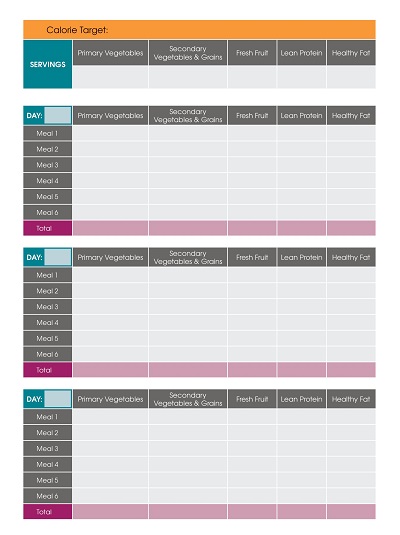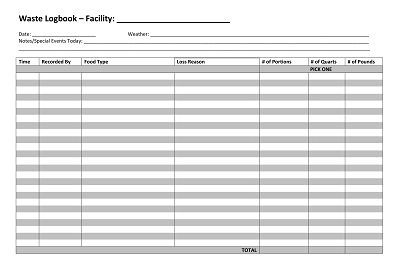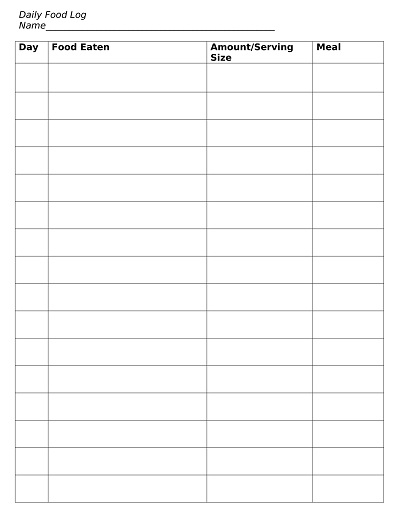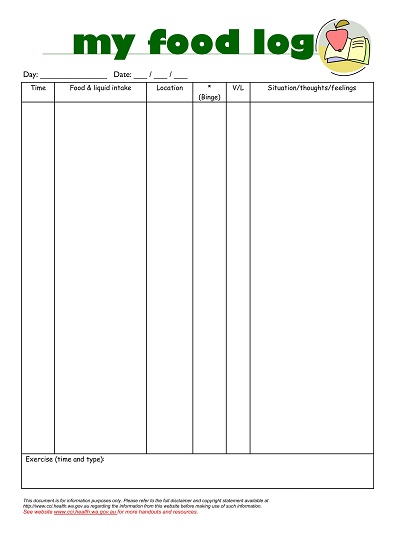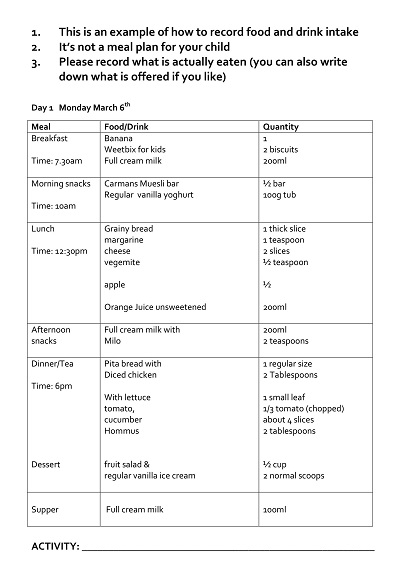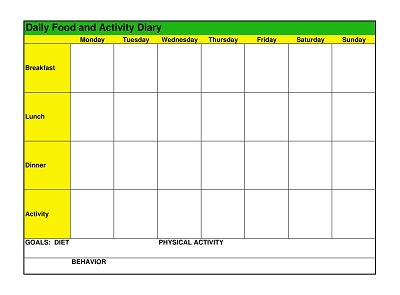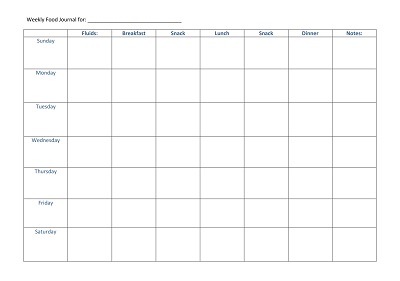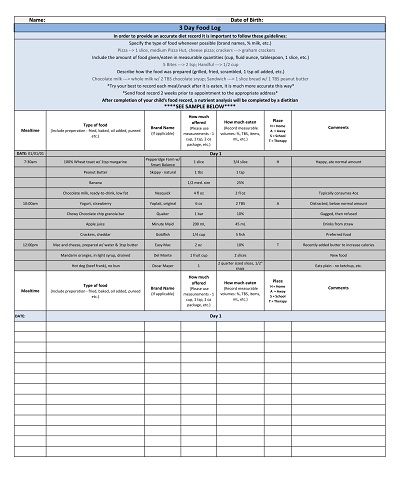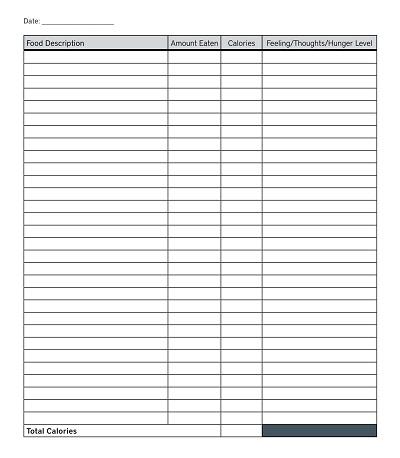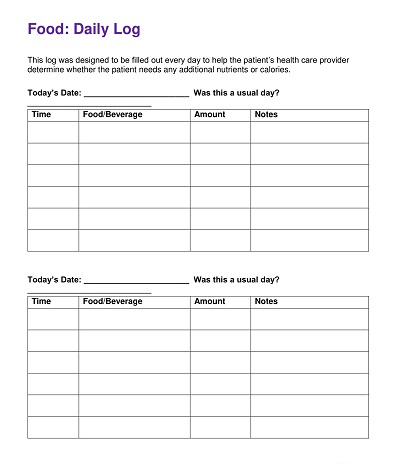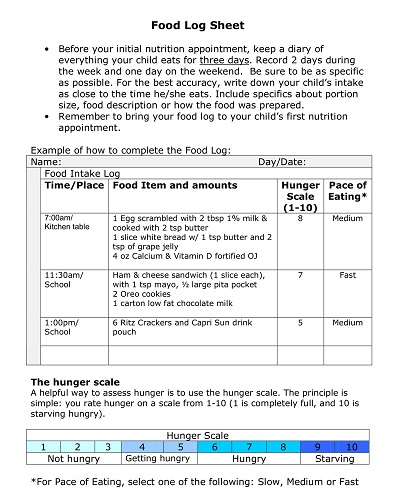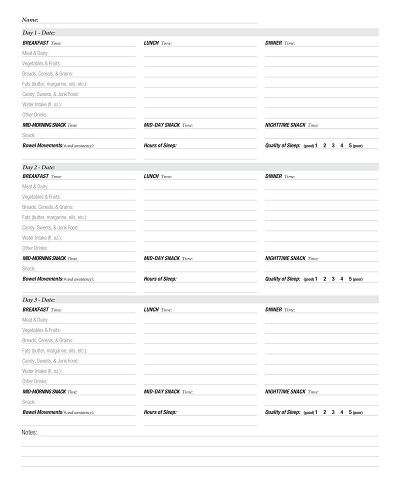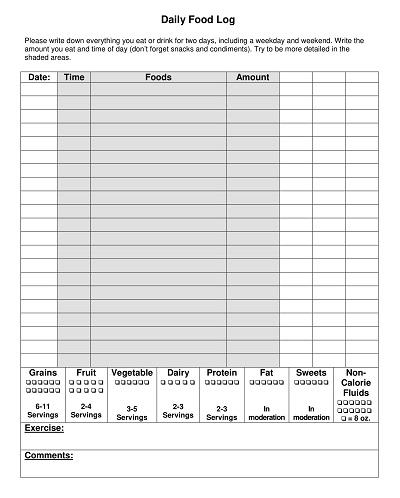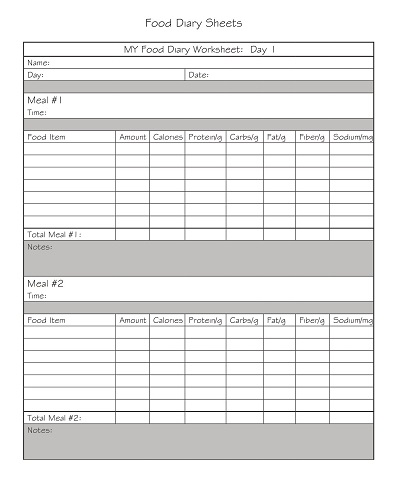65+ Free Printable Food Log Templates (MS Word, PDF)
Keeping track of your daily food intake can be essential to maintaining a healthy diet. A food log template can be a helpful tool in tracking what you eat and monitoring your portion sizes and calorie intake. This template can be customized to fit your specific needs and goals, allowing you to track important information such as the time of day you eat, the type of food consumed, and the amount consumed.
With this information, you can identify patterns in your eating habits and make necessary adjustments to meet your nutritional needs for optimal health. Whether you are looking to lose weight, manage a medical condition, or simply improve your overall health, a food log template can be a valuable resource to help you reach your goals.
Download Free Printable Food Log Templates
What is a Food Log and Why Should You Use One
Keeping track of what you eat through a food log can significantly benefit your physical health. A food log is a diary of everything you eat and drink throughout the day. By writing down what you consume, you can better understand how many calories you are consuming and what nutrients you may be lacking.
This information can help you make more informed choices about your dietary habits and potentially lead to weight loss or overall better health. In addition to the physical benefits, a food log can be an essential tool for those looking to improve their mental well-being. By being honest and reflective of what you eat, you can identify patterns contributing to stress or anxiety and make changes accordingly.
How To Track Your Calories and Macros Using a Food Log
Managing your calorie and macronutrient intake is crucial for maintaining a healthy lifestyle. But tracking your meals can get overwhelming. Luckily, keeping a food log is a simple and efficient way to monitor your eating. First, determine your daily calorie and macro goals.
Then, use a food scale to weigh your servings and record them in your log. Various mobile apps are available that make tracking easy, or you can stick to paper and pen. Remember, consistency is vital when it comes to tracking. Stick to it; soon enough, monitoring your food intake will become second nature.
Tips for Successfully Tracking Your Food Intake Through a Food Log
Keeping track of your food intake through a food log might seem daunting, but it’s a great way to gain insight into your eating habits and nutritional needs. To make the most of your food log, start by setting realistic goals. For example, you might want to track your one-week intake or focus on a specific meal or snack. Once you’ve established your goals, be honest and consistent with your entries.
This might mean carrying a notebook, jotting down information as you eat, or using an app that conveniently stores your data. For accurate results, remember to include all meals, snacks, drinks, and portion sizes. Finally, take note of any trends or patterns that emerge. Maybe you’re eating too many carbs or not enough protein. Use this information to make positive changes to your diet and reach your health and wellness goals.
Benefits of Keeping a Food Log
Keeping a food log may seem like a tedious task, but the benefits it provides cannot be ignored. By logging your food intake, you become more aware of what you’re putting into your body. As a result, you’re more likely to make healthier choices and adjust your eating habits accordingly.
You’ll gain insights into your eating patterns and habits, which can help you identify triggers for overeating or unhealthy snacking. Keeping a food log has also been linked to weight loss and improved digestion. It’s a small but powerful habit that can make a big difference in your overall health and wellness. So why not give it a try? Take a few minutes daily to log your meals and see what benefits you can reap.
How to Create a Food Log Template
In today’s fast-paced world, paying attention to what we eat is often tricky. We often consume unhealthy foods without realizing the impact on our health. However, keeping track of what we eat daily can be pretty beneficial. This is why a food log template can be a great tool to help you stay on track.
Decide on the format
The first step in creating a food log template is to decide on the format that suits your needs. You can create a simple table on paper or use an app or software to track your daily food intake. There are several options available, and choosing one you are most comfortable with is essential.
Set clear goals
Before starting your food log, have a clear idea of your goals. Do you aim to lose weight, maintain a healthy diet, or monitor allergies or intolerances? Define your goals first, and then customize your food log template accordingly.
Record everything
Record every meal, snack, and beverage you consume throughout the day. This includes all the ingredients, portion sizes, condiments, and spices used in cooking. This helps you keep track of your total calorie and nutritional intake.
Be consistent
Consistency is key to making your food log template work. Make it a daily habit to record everything you eat and drink simultaneously. Keep your template close to you, such as your planner, fridge, or phone, to ensure easy access and recording.
Analyze and adjust
After recording your food intake, analyze your food log template to identify areas that need improvement. For example, you may consume too many calories from sugary drinks or not getting enough protein in your diet. Use this information to adjust your diet or seek advice from a nutritionist.
Types of Food Log Templates
- Daily Food Journal: It includes food intake, physical activity, mood, and sleep patterns. It promotes self-awareness and identifies areas of improvement in your daily routine.
- Monthly Food Log: A monthly food log can benefit those seeking a more long-term tracking solution. It allows you to track your eating patterns and make necessary monthly adjustments.
- Yearly food Diary: This highly detailed log covers a year’s food intake. It can benefit individuals with chronic health conditions or those looking to change their diet and lifestyle significantly.
- Activity food log: This includes tracking food intake with daily physical activity. It can help you see how your diet affects your energy levels and performance during exercise.
- Weight loss food log: This log is designed for those trying to lose weight. It tracks food intake, portion sizes, and exercise to help you stay on track towards your weight loss goals.
- Medical Food Log: This type of log is often used by individuals with certain medical conditions or allergies. It helps track specific triggers or symptoms related to their condition. The medical food log allows you to manage better and understand your health.
- Food or Beverage Purchase Log: This log helps you track your weekly food or drink purchases. It can also help you track your grocery spending and ensure you are buying nutrient-rich foods.
- Free Food Log: A free food log is accessible and comes with basic features to track your food intake, calories, and other nutritional information. It’s an excellent choice for beginners starting on their health journey.
- Food Diary Log: The food diary log tracks what you eat but notes the timing of your meals and your feelings or reactions after eating. This food log helps you identify any emotional eating patterns or food sensitivities.
- Standard Food Diary Worksheet: This template is a more structured version of the food diary, including sections for breakfast, lunch, dinner, and snacks. It allows you to break down food items, quantities, and calories consumed.
- Food Tracker: This blog focuses on tracking your food intake, often including features to track water consumption and exercise. It can be a valuable tool when reaching specific fitness or health goals.
- Diabetes Food Log: This log is designed for individuals with diabetes. It helps to track blood sugar levels, carbohydrate intake, and medication doses. It assists in the management of this chronic condition.
The Role of Calories in Food Log
Calories measure the energy in our food, a vital factor in weight management. Reducing calorie intake is linked with weight loss, while a surplus can lead to weight gain. Understanding your food’s calorie content and daily calorie needs is crucial to using a food log.
Calories in a Food Item
Every food item we consume has a certain number of calories, which can be found on food labels or online databases. An apple may have approximately 95 calories, a slice of whole wheat bread around 70 calories, and a grilled chicken breast, about 165 calories. It’s important to understand that these values can vary depending on the extent and preparation of the food.
Calories per Day
The number of calories a person needs daily can vary based on age, gender, weight, height, and physical activity level. According to a U.S. Department of Health study, an active adult male needs about 2,400–2,800 calories daily, while an active adult female requires around 2,000–2,400 calories. Your food log can help you hit the correct daily calorie count based on your needs.
The choice of a food log depends on your individual goals and health needs. The suitable template can make food tracking easy and help you to understand your dietary habits better! 12 types of food logs are:
5 Key Components of a Food Log Template
A food-dairy template is essential to keep track of what you’re eating. It should include five key components:
- Date and Time: Each entry should be accompanied by the date and time the food was consumed. This helps you understand your eating patterns and optimise your meal timing for better health.
- Food Description: This section should detail all your foods and beverages. Be as specific as possible – note down the type of food, quantity, brand name, or even the recipe if homemade.
- Portion Size: Tracking portion sizes can be an eye-opener and can often explain why you’re not losing (or gaining) weight.
- Calories and Nutrients: Note the calories and primary nutrients like protein, carbohydrates, and fat. Many mobile apps and online resources can help you find this information.
- Feelings or Notes: This is an optional but helpful feature. Note how you felt after eating (e.g., were you still hungry, satisfied, or overfilled?) or any other observations related to your meals.
How Do You Make a Food Log From Scratch?
Creating a food log is a simple yet effective way to control your eating habits and make meaningful changes. Here’s a step-by-step guide to help you to make a food diary:
Step#01 Choose Your Medium
Decide if you want a physical notebook or a digital platform, like a spreadsheet or an app. The choice depends on your personal preference and what you’ll be more consistent with.
Step#02 Create Categories
Label the columns or sections of your log. Typical categories include date, time, food or drink consumed, portion size, and calories if you track them. Consider other relevant factors like mood, location, and hunger before and after meals.
Step#03 Record Your Intake
Write down every item you consume throughout the day. Be as specific as possible – include the type of food and the quantity. Don’t forget to include drinks, condiments, and ‘hidden’ calories.
Step#04 Review and Reflect
Review your log regularly to identify patterns. Reflect on your eating habits and consider whether they align with your health goals. Use this data to decide what to maintain, modify, or avoid.
Step#05 Plan Your Meals
Based on your reflection, plan your meals. Meal planning helps maintain a balanced intake and reduce impulsive or unhealthy eating decisions.
How to Customize a Food Log Template
Follow these steps to customise the template. It will help you make healthier choices and track your progress toward your dietary goals.
- Determine Frequency: Decide how often you want to log your food intake. Some people prefer to do it daily, while others only track their meals a few days a week. Choose a frequency that suits your behaviour and your goals. Remember, the goal is consistency, not perfection.
- Download or Print a Template: Next, you’ll need a template. You can either download one from the web or print one out. Many free options are available online, so you don’t need to design one from Scratch. Make sure the template you choose has space for all the details you want to track, like the type of food, the amount, and the calories.
- Track Information: Write down what you had and how much you ate each time you ate something. Be as detailed as you can; the more information you record now, the more insights you’ll be able to glean later. Don’t forget to log your drinks too!
- Monitor Data: At the end of each week, take a moment to look back over your food log and see what patterns emerge. Are you snacking more than you realised? Are there certain times of the day when you’re more likely to overeat? Use these insights to make small changes to your diet that can improve your health.

